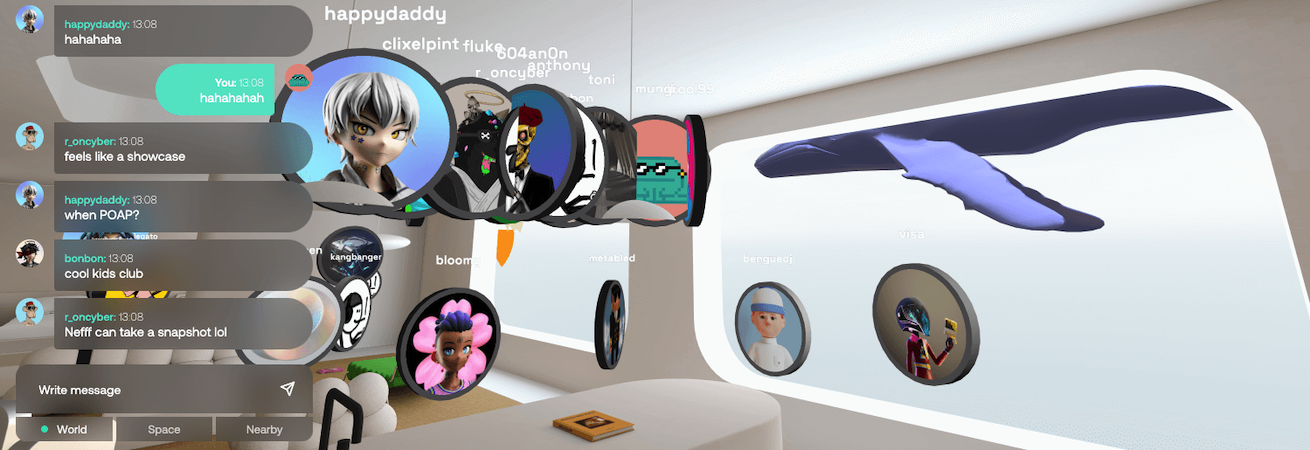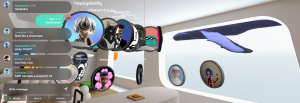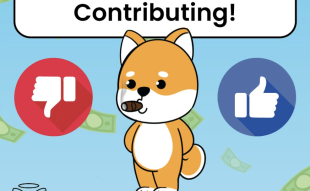Join Our Telegram channel to stay up to date on breaking news coverage
Amid all the excitement as of late around ChatGPT and OpenAI GPT models, there are some startups that are attempting to apply those technology to the crypto metaverse.
In their own words,
Oncyber is a metaverse platform that makes it easy for anyone to create their own 3D, immersive experience that can be accessed from the browser.
They provide a text-to-world interface that can be used to modify environments in real time, through an AI tool called Magic Composer. The platform provides many kinds of NTFs used by Web3 and communities, and it currently runs on OpenAI’s GPT-3.5 model.
Introducing a GPT-powered AI tool for text to world building ✨
here’s a sneak peek, where your creativity can flow from your brain to web3D.
stay tuned for public access — notifs on 🫡,
🔽 for early access pic.twitter.com/0GzkpYoMBC— ᴏɴᴄʏʙᴇʀ (@oncyber) March 15, 2023
CEO Rayan Boutaleb explained that Oncyber is able to customize the various elements of an environment, such as colors and looks, using simple text prompts. It can also be used to connect NFT works, through a crypto wallet, or change other aspects of a particular world.
He also explained this is only the first version of this tool, and that it is bound to get much more capable and complex in the coming iterations. In his words,
In the next iteration, what we want is for people to port any hallucination or dream they have into a 3D canvas, and just directly see the result of what they might imagine and change things up. It’s a first step towards a very big end result, which we are not that far off from.
The main differentiating factor currently contrasted with other metaverse building tools is the ease of the user experience. Whereas other tools provide various programming environments for world building, Magic Composer makes things very easy through the OpenAI text capabilities, and thus empowers NFT creators. It allows creators to focus on the creative aspect of their works but it also engages the user by allowing them to express their own creativity.
Currently, Oncyber is planning a private beta test release on Monday, March 20, and Boutaleb said that the more public test version should follow up soon.
More functionality planned
More powerful AI capability is soon to come. In the future, according to Boutaleb, he wants to include more sophisticated generative elements, like the capability to create customized or updated 3D architecture by simply entering in a request. According to him, Oncyber wants its customers to experience “less and less limits/boundaries” over time.
The Oncyber metaverse platform was initially introduced in 2021 and has features in common with Web3 metaverse game platforms like Decentraland and The Sandbox that also permit players to design their own online places.
Yet in contrast to other platforms, Oncyber didn’t offer the NFT land plots needed to construct in those worlds, rejecting the notion of “FOMO” and speculation stoked by a lack of available land. While working with architects and designers to create prefab environments that can be further customized, Oncyber does provide NFT-based templates for sale.
Not affected by the NFT land-grabbing hype
In 2021, at the peak of the crypto bull run, there was a lot of hype and “fear of missing out” in terms of NFTs and speculating on virtual plots. This hype crashed with the advent of the crypto bear phase.
Oncyber, which funded $6.7 million last year, wasn’t affected by the hype cycle for NFT land but instead, his team has concentrated on making regular improvements to the platform. Improved VR capability as well as the capacity to import external video and screen-sharing streams are further recent features.
You can establish a place without an NFT or a cryptocurrency wallet, and there are also free themes and spaces available. Moreover, Oncyber enables users to import their privately held NFTs from networks like Polygon, Solana, and Ethereum. Oncyber is used by some NFT collectors to set up online art galleries, while other users offer interactive community activities.
A Dark Cyberpunk Metaverse Called RobotEra
In the realm of the metaverse and NFTs, a new project worth mentioning here with a lot of potential is RobotEra.
RobotEra immerses players in a grim cyberpunk world where they create and control their own unique robots to explore and engage in combat.
These player against player (PVP) fights take place in a variety of game modes, including vicious bot fighting, high-octane robot racing, and even droid-based strategic games. Players will compete against one another in each of these games to win exorbitant awards and prizes.
The goal is to develop a vibrant community ecology centered on this intense circuit of difficulties.
Customization and individuality are at the core of the player experience to interact with this community dynamic.
RobotEra accomplishes this by using a distinctive drag-and-drop character creation system. As a result, there are countless design options for robots; the only restriction on what is conceivable is your creativity.
Gamers can take their time to design a svelte and fashionable robot to flex with on the racing podium or build a blocky behemoth capable of crushing bots in battle.
We have hit a major milestone! 🎉🎮
The #RobotEraArmy has raised more than $1,000,000!💪💰
We are deeply grateful to all of our supporters who helped make this achievement possible.🙏🤖
Get your $TARO today! 🚀⬇️ https://t.co/nBnvUcnbzU#Play2Earn #Presale #NFTCollection pic.twitter.com/1aDJTEoRgQ
— RobotEra (@robotera_io) March 13, 2023
Competitions and design challenges will further encourage users to display their unique robots, which is one of the ecosystem’s main design goals. They will take place in designated communal areas created around “factions” intended to highlight the distinctiveness and promote a sense of community.
Naturally, since this is GameFi, gamers must join in the RobotEra NFT marketplace to get the best things and the most cutting-edge customizing options.
This introduces a new dynamic that is inspired by the highly lucrative market for CS:GO skins, which is founded on a whole community posting millions in daily transactional volume and has a monster market cap of over a billion.
RobotEra aspires to create a full transactional experience for the user – not just take, take, take – with the opportunity to not only design distinctive bots but also to create significant profits through robot minting and selling.
And a $5k community prize on Twitter is the beginning of this ethos.
Check out our Play-to-Earn guide for other NFT games to play and invest in:
Native $TARO token presale
The network native ERC-20 $TARO coin serves as the skeleton of the RobotEra ecosystem’s economic structure.
In the ecosystem, TARO serves as the principal vehicle for transactional settlement.
The token will be used by players in the marketplace to mint, buy, and sell NFT items as well as robots.
It will also be given out as prizes for contests and challenges as well as used as insurance in high-stakes PVP fights.
This currency has the potential to experience a massive increase in trade volume thanks to the high transactional scalability provided by Ethereum 2.0.
TARO is now selling for a bargain price of just $0.020 USDT in its first round of presale.
But, as the promise of RobotEra draws near, things are moving quickly as investors rush to get a stack before the presale transitions to round two, which will result in a 25% increase in the price of TARO.
Check out RobotEra right away if you’re prepared to profit from the growth of online gaming.
https://insidebitcoins.com/buy-cryptocurrency/buy-robotera
Related
Join Our Telegram channel to stay up to date on breaking news coverage


